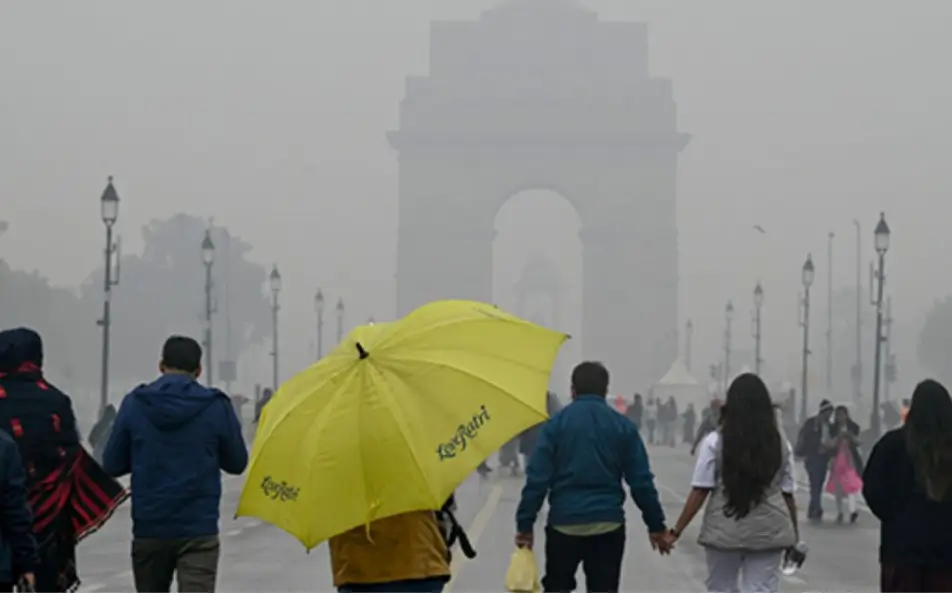US
Sat, Dec 27, 2025 | 04:10 PM IST
| Columbus | 5°C

The United Indian



Some mornings in Delhi feel like waking up inside a chimney. You step out of the house, rub your eyes, and that familiar burning sensation reminds you that the Air Quality Index isn’t just a number. It is a daily condition we live with. In neighbourhoods like Anand Vihar or around ITO crossings, you can see the haze sitting on the roads even before the city’s engines start roaring. This year, the government is trying something that sounds almost futuristic: Artificial rain in Delhi.
The idea comes from years of frustration. Traditional air pollution control measures have helped here and there, but not enough to keep pace with the traffic, construction, and crop-burning smoke floating in from Punjab and Haryana. As Delhi’s residents cough their way into winter, the government wants to push the sky itself to help us breathe again.
The operation begins not in Delhi but a few hours away in Kanpur. A specialized aircraft, waiting for the perfect weather window, will fly toward Delhi, carrying chemical flares. These flares release tiny particles inside the darker, heavier clouds above the capital. This process is part of cloud seeding technology, which countries like UAE and China use fairly often. For us, it’s the city’s first real attempt at using science to ask the sky for a favor.
Meteorologists from IIT Kanpur have been involved. Pilots are ready. The only thing that needs to cooperate is the weather itself, which, as every Delhiite knows, has a mind of its own.
Ask a school kid in Dwarka or Mayur Vihar about the winter season, and they’ll tell you it begins when sports classes move indoors and the masks come out again. Delhi pollution is not just a headline. It decides what time parents allow children to step outside. It shapes how elderly residents plan their morning walks. It even controls whether people dare open their windows.
There is a strong, almost desperate hope that if rain falls natural or not the air will feel lighter. There was a time, perhaps 20 or 25 years ago, when a sudden November drizzle cleared the sky and people would say “Dilli ki hawaa badal gayi!” Now, that natural moment rarely arrives on schedule.
Cloud seeding isn’t some magic button. It requires very specific cloud types -large enough to hold moisture, but not too thick to fly into. Scientists describe the process simply: moisture clings to the particles released by the plane, droplets grow, and combined weight pulls them down as rain.
Delhi’s trial will target areas based on pollution hotspots. You might see this flight passing over places near Ghazipur, Wazirabad, Mukarba Chowk-locations where smog feels like a wall. Officials will monitor how much rainfall occurs and how quickly the AQI drops afterward.
If this succeeds, cloud seeding technology could become a seasonal strategy, like the odd-even policy or anti-smog guns. Except this one actually brings water with it.
Water shortage is another problem we like to forget until the taps run dry. With groundwater depleting and Yamuna levels swinging wildly, even small increases in artificial rainfall can help. No one is pretending this solves everything, but the timing is clever. It’s like solving two headaches with the same tablet: cleaner air and a tiny push against the scarcity ahead.
Some environmental researchers have shared caution:
• Rain stops pollution temporarily, but emissions continue
• Long-term chemical impact must be studied carefully
• Weather unpredictability makes project success uncertain
Delhi has seen many experiments arrive with a grand launch and fade quietly. People still remember that giant smog tower near Connaught Place. It hasn’t exactly changed the city’s air. That is why some folks are watching this trial with cautious eyebrows raised.
Earlier this week, a roadside vegetable seller near Lajpat Nagar told me,
“Bhaisaab, jab baarish hoti hai tab hawa saaf lagti hai. Koi bhi tareeka ho, bas saans toh aaye.”
That sentiment is shared by millions. Residents are tired. Masks aren’t a pandemic symbol anymore. They are a pollution accessory. Office workers traveling near Dhaula Kuan often keep a scarf ready inside their bags. Asthma patients stock up on inhalers like groceries.
So, if Artificial rain in Delhi means one day of clear skies, most people are completely willing to try.
Wind direction, temperature, cloud height-every factor can swing the result. The aircraft crew must launch precisely when visibility allows them to take off and clouds have enough moisture. A little change in humidity and the entire plan may get delayed.
Delhi isn’t famous for being gentle with plans. One minute there’s cloud cover. The next minute the sun blasts through like a spotlight.
That’s why officials are calling this a test, not a guarantee.
Delhi is telling the country something important: the environment isn’t an issue to be discussed only in international conferences. It affects how many days children miss school. It affects how often people rush to a hospital. It affects whether stepping outside becomes a risk.
This is not a lazy move or a political showpiece. It signals urgency.
More cities will watch what happens. If rainfall successfully scrubs the air, even for a few days, the response could be massive. Cities like Kanpur, Faridabad, and Lucknow may look at similar trials.
We cannot cheer like this is the end of the fight. Even with air pollution control through artificial rain, exhaust pipes and factory fumes will keep pumping bad air unless deeper reforms take root. But every war needs more than one kind of weapon. Delhi is simply adding another one to the arsenal.
Not grand promises. Not pretty speeches. Just the right to breathe without feeling punished for living in the capital.
Whether it’s the person sweeping the streets near Mandi House at 5 a.m., or a student commuting from Rohini with a loaded backpack and a stinging throat, everyone wants something simple: relief.
The United Indian brings you a ground report from the capital, where a first of its kind experiment is preparing to take on Delhi’s toughest enemy: pollution. The first raindrop that falls from this trial, if it happens, will carry more meaning than water. It will carry hope. A signal that Delhi is refusing to surrender to pollution. The launch of Artificial rain in Delhi is a reminder that science can still serve the common person, even in the most polluted corners of our land.
Maybe the sky will open. Maybe it won’t. But for once, the citizens can look upward not with fear of smog, but with a tiny bit of anticipation.
Everything you need to know
Because many of us wake up coughing every single winter. You look out the balcony and the sky looks like it’s wrapped in a dirty blanket. Officials are hoping that a little rain artificial or not-might wash away some of that dust and smoke. Honestly, people here just want a day when breathing doesn’t feel like a workout.
Rain does help. Anyone in Delhi will tell you the air feels lighter after a shower. But one shower won’t magically fix years of smoke from cars and burning fields. If it rains, great. We breathe easier for a bit. We still need solid plans on the ground.
Experts working on the project say the substance they release into the clouds is used in very tiny amounts, mainly to help the moisture form raindrops. Countries like the UAE and China have been doing this for years. People here just want to be sure nothing harmful falls with the rain, and that is understandable. Delhi’s officials say they will keep monitoring the impact closely instead of assuming everything is fine.
Knowing Delhi weather, anything can happen. The clouds are behaving like unreliable friends-they show up but refuse to help. The teams can only work if the sky cooperates. If humidity drops or clouds vanish, the aircraft waits.
Pretty soon. If it rains, people will celebrate it on social media within minutes. Scientists will check if the AQI dips and how long that relief lasts. The real test is whether this becomes something Delhi can rely on every year, not just a one-day headline.
#weareunited
We respect your privacy. Unsubscribe at any time. Privacy Policy
Dec 23, 2025
TUI Staff
Dec 21, 2025
TUI Staff
Dec 19, 2025
TUI Staff
Dec 18, 2025
TUI Staff
Comments (0)
Be the first to comment!